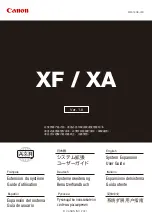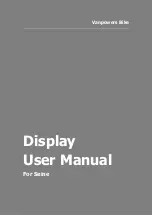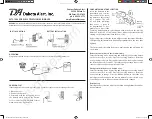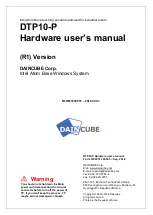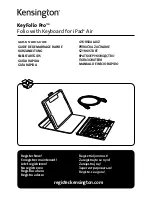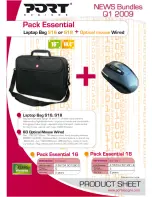
12
KNOWING YOUR SEWING MACHINE
———————————————————————————————————————————————————————————————————————————————————
USING YOUR SEWING MACHINE
Power supply precautions
Be sure to observe the following precautions concerning the power supply.
Power supply
a
Insert the plug into a wall outlet.
a
Main power switch
b
Jack/socket connector
b
Set the main power switch to “I”.
X
The sewing lamp comes on when the
machine is turned on.
c
To turn off the machine, set the main power
switch to “
{
”.
X
The sewing lamp goes off when the
machine is turned off.
Note
●
If a power outage occurs while the sewing
machine is being operated, turn off the
sewing machine and unplug the power
supply cord. When restarting the sewing
machine, follow the necessary procedure to
correctly operate the machine.
(For U.S.A. only)
●
This appliance has a polarized plug (one
blade wider than the other). To reduce the
risk of electric shock, this plug is intended
to fit in a polarized outlet only one way. If
the plug does not fit fully in the outlet,
reverse the plug.
If it still does not fit, contact a qualified
electrician to install the proper outlet. Do
not modify the plug in any way.
●
Use only regular household electricity for the power source. Using other power sources may result in
fire, electric shock, or damage to the machine.
●
Make sure that the plugs on the power cord are firmly inserted into the electrical outlet and the power
supply jack on the machine.
●
Do not insert the plug on the power cord into an electrical outlet that is in poor condition.
●
Turn off the main power and remove the plug in the following circumstances:
• When you are away from the machine
• After using the machine
• When the power fails during use
• When the machine does not operate correctly due to a bad connection or a disconnection
• During electrical storms
●
Use only the power cord included with this machine.
●
Do not use extension cords or multi-plug adapters with many other appliances plugged in to them. Fire
or electric shock may result.
●
Do not touch the plug with wet hands. Electric shock may result.
●
When unplugging the machine, always turn off the main power first. Always grasp the plug to remove it from
the outlet. Pulling on the cord may damage the cord, or lead to fire or electric shock.
●
Do not allow the power cord to be cut, damaged, modified, forcefully bent, pulled, twisted, or bundled.
Do not place heavy objects on the cord. Do not subject the cord to heat. These things may damage the
cord and cause fire or electric shock. If the cord or plug is damaged, take the machine to your
authorized dealer for repairs before continuing use.
●
Unplug the power cord if the machine is not to be used for a long period of time. Otherwise a fire may result.
WARNING
CAUTION
1
2
Summary of Contents for CE-8080PRW
Page 2: ......
Page 102: ......
Page 103: ......
Page 104: ...English 885 V60 V61 V62 V63 V64 V65 XF0213 001 Printed in China ...






























